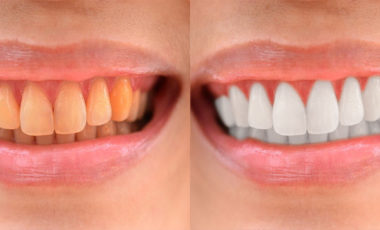DIY: Quickly and Easily Remove the Background in Photoshop
admin
November 3,2016

Background Eraser Tool
There are many methods to remove an unnecessary background from an image. With some simple background, using the standard magic wand tool to select and delete the background is the optimal choice. But how about the other complicated image?
For this situation, we should use the Background Eraser Tool of Photoshop. This is a very simple and easy tool to use. This tool samples the color at the center of the brush and then deletes pixels of a similar color as you “paint.” It feels like painting with acid. Let me show you how it works.
Step 1: Open your Image
Start by grabbing an image that you want to remove the background from. I’ll use this image as it features areas that range from easy removal through to more challenging spots.

Step 2: Select Background Eraser
Select the Background Eraser tool from the Photoshop toolbox. It may be hidden beneath the Eraser tool. If it is, simply click and hold the Eraser tool to reveal it.

Step 3: Tune Your Tool Settings
On the tool options bar at the top of the screen select a round, hard brush. The most appropriate brush size will vary, depending on the image you’re working on. Use the square bracket key ([ or ]) for quickly scaling your brush size.

Next, on the tool options bar, set the Sampling to Continuous, the Limits to Find Edges and a Tolerance of somewhere between 20-25% is a good starting place.

Note: A low tolerance limits your eraser to areas that are very similar to your sampled color. A higher tolerance expands the range of colors your eraser will select.
Step 4: Begin Erasing
Bring your brush over your background and begin to erase. You should see a brush-sized circle with small crosshairs in the center. The crosshairs show the “hotspot” and delete that color wherever it appears inside the brush area. It also performs smart color extraction at the edges of any foreground objects to remove ‘color halos’ that might otherwise be visible if the foreground object is overplayed onto another background.
Note: For the example image, I actually used a rather high Tolerance than the 20-25% recommended above due to the wide range of blues behind this subject.

When erasing, zoom up your work area and try to keep the crosshairs from overlapping on the edge of your foreground. It’s likely that you will need to reduce the size of the brush in some places to ensure that you don’t accidentally erase part of your foreground subject.
Step 5: Choosing Effective Limit and Sampling Settings
Even though I have used a smaller brush to work around the hair and neck area, the Background Eraser has still managed to gouge a few chunks out of the hair and shirt.

For foreground image areas that share colors with the background (like this one), you may need to adjust the Sampling and Limits. In this picture, I switched over to the Sampling: Once option set my Limits to Discontinuous and set my Tolerance to 30%.

The Sampling: Once option samples the color under the crosshair is only the moment that you click and it doesn’t resample as you move your brush along. The Discontinuous Limit option allows you to erase all pixels that match the sampled color that you’re erasing. This allowed me to get in between the hair strands without erasing them. There’s a good chance. The Background Removal Tool may be all you need to complete your task. But if not, read on.

Step 6: Quick Mask or Pen Tool
While removing the background on our example image is mostly straightforward due to the fairly solid background, there are inevitably areas of our foreground subject that get wrongly erased as we work close to foreground’s edges.

In our example, the foreground and background share similar colors due to the lighting. This will be easiest to repair using Photoshop’s Pen tool. I only have a small section I need to touch up, so I’ll use the Pen to create a clean selection and delete the unwanted background.

Here’s the finished result:

CONCLUSION
This is actually easy but not a professional way. It can take you more time than usual to remove a complicated background. We will have other posts about how to solve this problem by using other complicated technics. And even that, with a complicated image, we may have to use various methods require a mix of tools, samplings, and tolerances along with occasional manual touch-ups. But when you master them, the Imaging Background Removing will be processed quickly and professionally more than usual with higher imaging quality. But if you are newbies, this is a convenient way. Good Luck!






















Leave a Reply